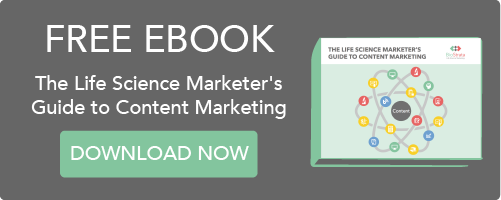The scientific world is no stranger to misconceptions – and I’m not only talking aboutthe glaring historical ones like Geocentrism or flat-Earth theory (though the latter has re-emerged as something of an internet movement).
More recent and pervasive scientific misconceptions include the tongue taste map we all learned in school, and that we only have five senses (the real number is between 9 and 21).
But misconceptions exist in other areas of our lives as well, like business, technology and marketing. Misinformation in these areas can have considerable gravitas when its pernicious hand influences important business decisions for your company.
With this in mind, we’re here to debunk and dispel three common misconceptions about life science content marketing.
Life science content needs to be dry and technical.
When people hear the term “life science marketing”, they often believe it exclusively entails highly technical content, like whitepapers and highly detailed product guides.
Why it's wrong:
But this isn't the case at all. The beauty of science is that it's a topic that can be presented in so many diverse ways – technical content, blogs, infographics, video content, you name it. If anything, your life science content will perform better when it’s presented creatively in a way that breaks the mould and challenges expectations.
Life science content marketing is difficult.
It’s a common perception that everyone working in the industry requires PhD-level scientific knowledge. Life science marketers should additionally be expert marketers, know the latest content distribution platforms inside and out, as well as have an in-depth understanding of analytics. To put it simply – life science content marketing is an incredibly difficult area for only the most masochistic of technically adept marketers.
Why it's wrong:
Again, that's not the case at all (you’re probably sensing a trend with these). While there’s plenty of room for highly skilled marketers to shine, life science content marketing is most effective when approached as a team. Its most distinctive strength – the breadth of expertise in a life science company – can actually make the marketer’s job that much easier, as everyone can collaborate to develop and execute great ideas.
It needs to be sales driven (or it won’t work on scientists).
Our last misconception involves both life science marketing content and its target buyer – scientists. Marketers often believe scientists have little patience for content that doesn’t directly describe the product and its features, and, therefore, will only respond to brochures or detailed user guides. Because life science content marketing doesn’t focus all of its energy on sales-driven content, it simply doesn’t work on scientists.
Why it’s wrong:
Scientists aren’t cartoon versions of their professions – they’re humans just like the rest of us. They go through the buyer journey just like anyone else does: they start with a problem, and look for a solution. If you provide them with enough information during the awareness, consideration and decision stages, it will work as well as any other B2B content marketing strategy. Just make sure your content creation is on point, and communicates key messaging.
So, what can you do to overcome these misconceptions?
Produce awesome, interesting and diverse content, and illustrate the power of content marketing by showing your company’s ROI.
Download the guide below to get started.




